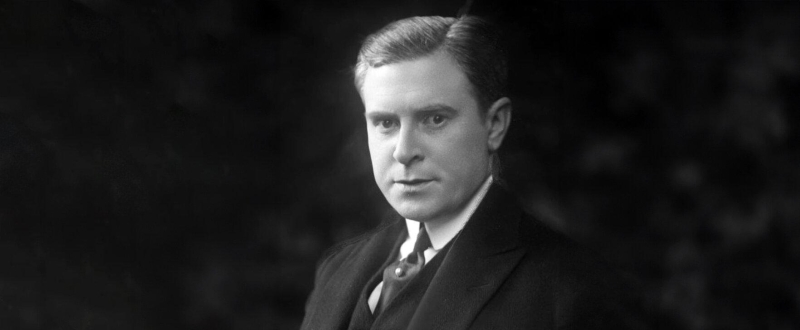Contents
- 1 From Ajaccio to Marseille: the early years of François
- 2 A new beginning in the city of love
- 3 Laboratory evenings and first fragrance experiments
- 4 From Spoturno to Coty
- 5 Coty in Grasse, the perfume capital of the world
- 6 Coty’s legendary fragrance “La Rose Jacqueminot”
- 7 From waiting room to global success
- 8 Revolution in flacon design: Coty and René Lalique
- 9 Coty’s passion for art and architecture
- 10 Perfume creations that made history
- 11 Political ambitions and controversies
- 12 Between marriage and affairs: The turbulent love affairs of Coty
- 13 The legacy of François Coty
A journey through the life of François Coty – the founder of the modern perfume industry whose legacy lives on today.
I knew I was meant to be a perfumer; it was a profession that was made for me.
François Coty
The history of perfumery is full of creative geniuses and innovative minds who have shaped and molded the industry – François Coty was one of them. As the “father/Napoleon of modern perfumery”, Coty revolutionized the world of fragrances and is considered the founder of the modern cosmetics and perfume industry. From bumpy beginnings to his rise to world-famous perfumer and successful entrepreneur – in this article, we embark on a journey through the life of François Coty.
From Ajaccio to Marseille: the early years of François
François Coty was born Joseph Marie François Spoturno on May 3, 1874 in Ajaccio on the Mediterranean island of Corsica. His childhood was overshadowed by tragedy: He lost his mother when he was just four years old, and three years later his father also died. His parents, Jean-Baptiste Spoturno and Marie-Adolphine-Françoise Coti, were descended from Genoese settlers who founded Ajaccio in the 15th century. Little François was initially raised by his great-grandmother and, after her death, by his grandmother, who lived in Marseille.
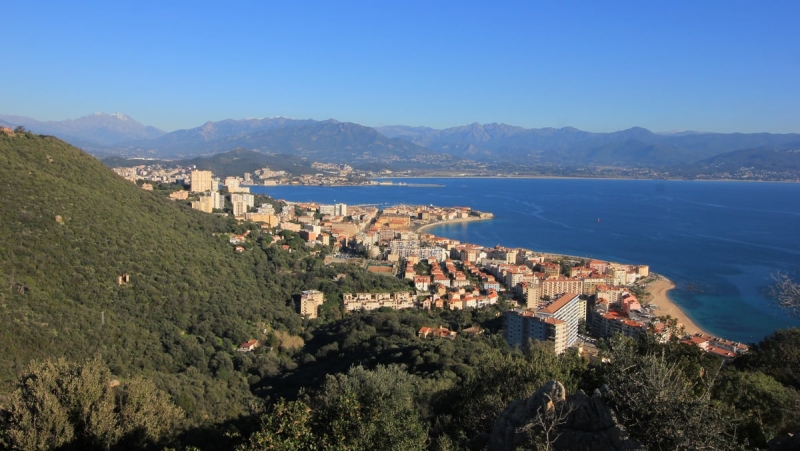
View of Ajaccio – the birthplace of Coty
His relatives tried everything to provide him with an education – but to no avail. Coty had to drop out of school early as he could no longer afford the school fees. As a young man, he worked as a salesman in Marseille and completed his military service. He discovered his talent for sales while trading in women’s fashion items: he was a master at convincing women of the quality and beauty of linen, lace and ribbons. This talent, coupled with his instinct for the wishes and needs of his customers, would later prove to be a great advantage in the perfume industry.
After a few years of military service, François met a fellow Corsican named Emmanuel Arène, a member of the Académie Française, politician, writer and future senator. Arène promised to support him in Paris if François ever found his way to the French capital. Coty soon kept this promise when he arrived in Paris in his mid-20s.
A new beginning in the city of love
As promised, his new friend helped him to find his feet and offered him a job as a secretary. Arène saw in Coty an intelligent and ambitious young man with great potential – and became his mentor.
The year 1900 brought many decisive changes for François Coty. In Paris, he not only found inspiration and work, but also love. He married the talented milliner Yvonne Dubois Le Baron, a woman with a strong personality and a keen sense of humor. He also became friends with the pharmacist Raymond Goëry, who sparked his interest in fragrances.
When Coty visited Goëry’s pharmacy on Avenue de la Motte-Picquet, he was magically attracted by the scents and chemicals. However, he was irritated by Goëry’s perfumes, which were packaged in sturdy bottles normally used for medical products. Coty doubted that the elegant Parisian ladies would find these bottles and labels appealing.
Laboratory evenings and first fragrance experiments
François was considered a clever opportunist who enjoyed convivial evenings with Yvonne and often played cards with Raymond Goëry and his wife. When Goëry didn’t have time to mix his fragrances during the day, he worked in the laboratory in the evenings – and Coty was often there to learn from him. He began experimenting with simple ingredients to create a light, airy citrus fragrance. However, a more sophisticated perfume required a more complex formula, for which François had no training. Nevertheless, he soon developed his first Eau de Cologne, which he named “Cologne Coti” after his mother. Raymond assured him that his fragrance was beguiling.
The Paris World Fair of 1900 also played an important role in François Coty’s career. Together with Yvonne, he spent a lot of time at the fair, which attracted 45 million visitors. There he met other perfumers, was inspired by the works of modern artists such as Picasso and was impressed by the architectural masterpiece of the new Grand Palais.
At the exhibition, François Coty was introduced to René Lalique by his friend François Carnot, President of the Union Centrale des Arts Décoratifs and a committed cultural activist. Lalique was a famous glass and jewelry artist and exhibited his award-winning pieces of jewelry there. Nobody could have guessed at the time that just four years later, François and Lalique would begin a collaboration that would revolutionize the world of flacon design.
From Spoturno to Coty
The young François needed money and wanted to be successful. So that he could market himself and his products well in the future, Arène advised him to use his mother’s name: ‘Coti’, but spelled with a ‘y’. In Paris and in business, it was better to leave ‘Spoturno’ behind. Arène is also said to have predicted that his new name stood for greatness.
As François Coty, he now traveled through the provinces to market his new Eau de Cologne . He realized that the market for luxury perfumes only attracted a small wealthy clientele. In contrast, the inexpensive perfumes were heavy, traditional and unexciting, but sold well due to the lack of competition. Coty dreamed of a world in which women would pamper themselves and their loved ones with fragrances and powders.
To finance the bottles and labels, he borrowed money from his grandmother, who always stood by him when he needed it. As he had no budget for advertising, he is said to have loaded a rented pony cart with bottles of eaux de cologne and drove it through the southern provinces. He attached ripe country hams to the back of the cart. Hungry stray dogs are said to have noticed the cart and fought over the meat, causing the villagers to become curious and flock to it.
Coty in Grasse, the perfume capital of the world
Through Arène, François learned about two other opportunities that influenced the course of his life: an introduction to Senator Antoine-Léon Chiris in Paris and an apprenticeship in Grasse, the center of perfume production, where the Chiris family ran one of the largest and most successful perfume companies and exported its products worldwide. Antoine-Léon Chiris was a close ally of Arène, a successful politician and entrepreneur who continued his father’s perfume business and was instrumental in developing the industry.
In Grasse, François spent his days in the laboratory, where he learned the art of perfume production and gained an insight into the chemical processes. Since 1850, the perfume industry had changed dramatically, particularly with the introduction of volatile solvents for extraction techniques. Louis Chiris, a pioneer in this field, had acquired the patent for these methods and founded the first chemical extraction factory in Grasse. Some renowned manufacturers also began to use synthetic fragrances in their perfumes. Chiris’ innovations made these advances widely available, making perfume production more profitable and affordable.
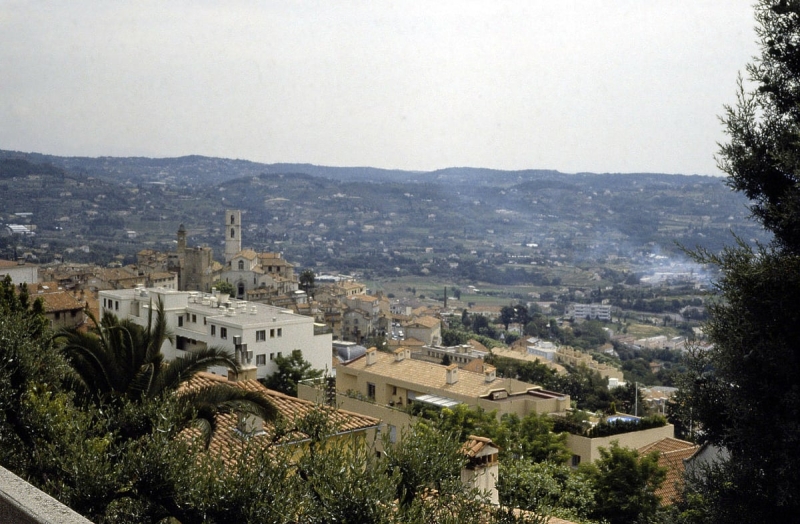
Grasse – The world capital of perfume
Coty’s legendary fragrance “La Rose Jacqueminot”
François learned to combine natural essences with synthetic molecules and in 1903 created the women’s fragrance “La Rose Jacqueminot”, named after Rosa centifolia (centifolia). Coty used rose absolutes from damascena and centifolia, which were enriched with synthetic molecules such as rhodinal, ionone and phenylethyl alcohol. It is said that the composition combines all the elements of modern perfumery discovered in the late 19th century to create a new olfactory symphony that harmonizes perfectly with the modernity of the new century.
After his return to Paris, François and Yvonne transformed their apartment into a small factory with a laboratory and sewing room. Coty continued to sell his Eau de Cologne and develop new fragrances. The production of “La Rose Jacqueminot” was part of his major project.
In order to offer his feminine rose fragrance in equally beautiful packaging, he chose a Baccarat fakon from France’s most renowned glass manufacturer. As a milliner, Yvonne gave the bottles an elegant touch with silk pouches, gold velvet ribbons and satin embellishments, while her brothers Henri and Paul and her young uncle Alphée designed and engraved the labels for the bottles.

The Eau de Toilette “La Rose Jacqueminot” by Coty (1904)
In 1902, Coty finally opened his first boutique at 28 Place Vendôme in Paris and presented some of his first creations. An advertisement for his boutique stated:
All ladies who go directly to 28 Place Vendome to buy our new perfume will be offered a corset bag made according to a special process that allows us to guarantee the durability of the perfume it contains for 6 months despite its small dimensions.
–
Bags for lingerie, corsets, handkerchiefs, gloves, corsetry. Raisin boxes, special nightwear bags, all perfumes. Our bags are made with a special process that allows us to guarantee the duration and durability of the perfume.
By the end of 1903, François was ready to launch “La Rose Jacqueminot”. He put on his best suit and set off to sell his perfume to Parisian retailers. And again, he proved to be an excellent salesman in Paris. He sought out buyers in department stores and boutiques. His charm also opened up new outlets such as kiosks, which until then had sold neither perfume nor eaux de cologne. The aesthetics of the bottles in the pretty pouches with the ornate labels inspired the shopkeepers to make bulk purchases.
From waiting room to global success
There is also a legend surrounding the breakthrough of “La Rose Jacqueminot”: Coty is said to have tried for days to meet Henri de Villemessant, the director of the Grands Magasins du Louvre department store in Paris, but was repeatedly put off in the waiting room. Finally, his patience ran out – and he dropped a bottle of “La Rose Jacqueminot” at the perfume stand. Customers immediately flocked in and demanded dozens of bottles of the new perfume. The rush was so great that Monsieur Villemessant had to go and see for himself. To his surprise, he discovered that the young man who had been waiting outside his office was responsible for the sudden rush. Villemessant recognized the potential of François’ perfume and offered him a coveted stall on the first floor. Given the obvious success of “La Rose Jacqueminot” and the need for capital to expand production, Villemessant offered François financial support.
Whether there is any truth to this story or not, one thing is certain: “La Rose Jacqueminot” was Coty’s first major success, a milestone in his career and paved the way for later classics.

A poster by Leonetto Cappiello for “La Rose Jacqueminot”
Revolution in flacon design: Coty and René Lalique
François Coty proved to be not only a talented perfumer, but also a clever businessman and marketing strategist. Although his Baccarat flacons were of high quality, it bothered him that other companies were also using them. He wanted to stand out from the crowd. Realizing that his perfumes not only had to smell good, but also be packaged in an aesthetically pleasing way, Coty teamed up with the famous jewellery and glass artist René Lalique, whom he had met at the Universal Exhibition. Lalique created flacons that visually showcased the Coty fragrances and made the brand unmistakable.
In 1908, René Lalique first designed a label for the perfume “L’Effleurt”. The bottle design followed four years later. Lalique also designed the bottles for Coty’s first perfumes, such as “Ambre Antique” and “L’Origan”, which became bestsellers.
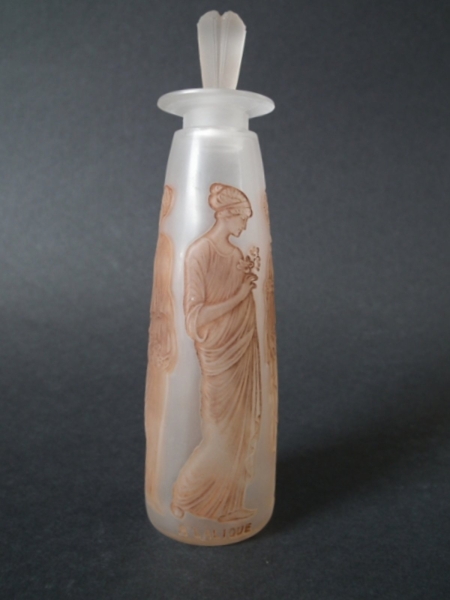
Flacon of “Ambre Antique”, designed by René Lalique
Although Coty was fascinated by Lalique’s designs, he was annoyed by the high manufacturing costs for the mass production of his perfumes. As a solution, he later began to produce similar shapes in his glass factories to reduce costs. This had a further impact on the perfume industry: traditionally, perfume was a luxury item that only a few could afford. Coty broke with this convention by offering luxurious fragrances in the distinctive Lalique bottles for the elite while introducing smaller, more affordable bottles for the broad middle class.
Coty also introduced the idea of the fragrance set, which contained a gift box with different items that had the same scent: perfume, powder, soap, cream, bath salts, lipstick and other cosmetics. By integrating perfumes into various cosmetic products, Coty progressed from the artisanal age to the industrial age of perfume production.
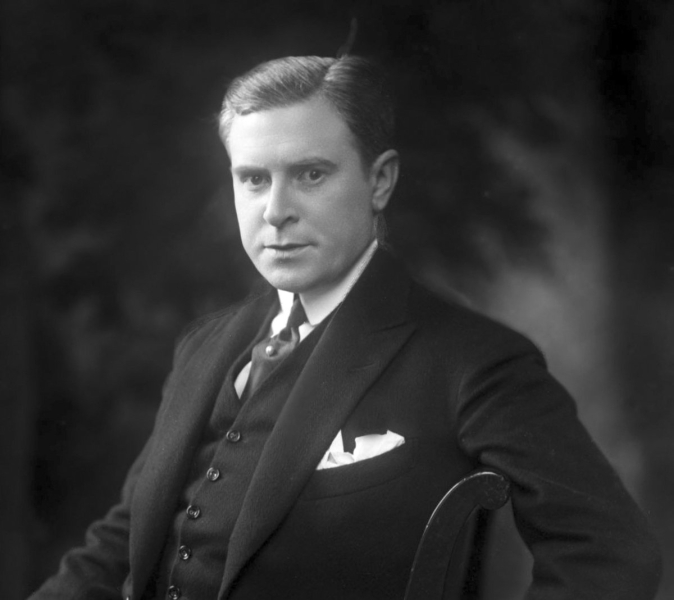
François Coty, about 1910
Coty’s passion for art and architecture
in 1908, Coty moved its headquarters to Suresnes and built “La cité des Parfums”, a complex of laboratories and factories. With a workforce of around 9,000 employees, the company produced up to 100,000 perfume bottles a day to meet the growing global demand. In 1910, he opened a store on 5th Avenue in New York and commissioned René Lalique to design the monumental stained glass windows on the façade.
In the heart of Manhattan, the “Coty Building” – a six-story building with a facade inspired by French architecture and a mansard roof – exudes the beauty and elegance of French savoir-faire.

Coty Building in Manhattan (2019)
Two years later, Coty bought the “Château d’Artigny” near Tours and had it renovated. Over 20 years, he transformed the property into a magnificent residence, with bespoke kitchens, ballrooms and a large fresco depicting himself, his family, friends and even his mistresses.
Perfume creations that made history
At the beginning of the 1910s, several perfumes were already part of the house’s range. Coty’s vision was to create a fragrance for every woman. He described his approach as follows:
Give a woman the best product there is and market it in a perfect bottle, beautiful in its simplicity and impeccable in taste, charge a reasonable price for it, and you will witness the birth of a business the likes of which the world has never seen.
François Coty
During this time, he created some of his most famous fragrances such as “Au Cœur des Calices” in an ornate bottle by René Lalique. The sensual, oriental “L’Or” with its intense tobacco and floral notes has also been reissued.
in 1917, Coty in Suresnes launched one of its greatest successes: the chypre-like, floral women’s perfume “Chypre”. Although chypre fragrances had been popular for centuries, Coty came out on top with its own version.
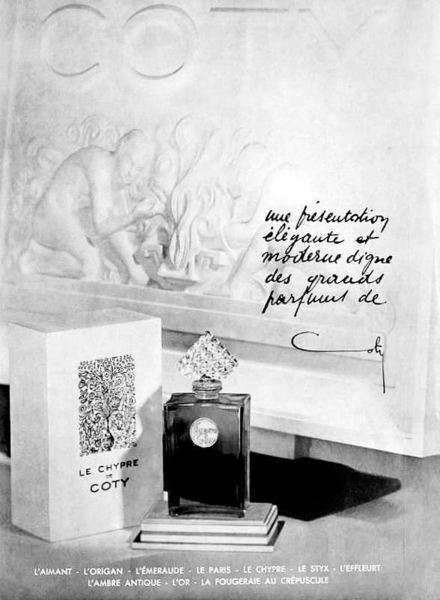
The “Chypre” Eau de Toilette
After the First World War, Coty successfully expanded into the American market. French perfumes became increasingly popular, especially as American soldiers brought them back as gifts for their wives. Coty recognized the immense potential and quickly established a strong presence in the USA.
In the 1920s, the perfumes of Coty conquered more and more fragrance lovers all over the world. François Coty expanded his empire beyond France and signed distribution agreements with Switzerland, Spain, Italy, Germany, Romania, Brazil, Argentina and Mexico. In 1925, Coty Inc., founded in 1922, went public and became one of the most powerful and successful companies.
Political ambitions and controversies
François Coty was not only a visionary entrepreneur, however, but also a controversial figure in the political landscape. In the 1920s, he used his success as a perfume manufacturer to acquire newspapers and spread his anti-communist, anti-Semitic and fascist views. As early as 1919, he bought shares in the daily newspaper “Le Figaro”. When he was appointed political director in 1927, he transformed the formerly moderate conservative newspaper into a mouthpiece for his extremist beliefs, which led to controversy and resistance within the editorial team.
The economic crisis of the 1930s weakened him financially, but also provided him with another springboard for his political ambitions. After being elected mayor of Ajaccio in 1931, he sought proximity to the extreme right and further expanded his political influence. However, his propaganda-oriented newspaper empire proved to be a financial fiasco: neither “Le Figaro” nor the newspaper he founded “L’ami du peuple” (“The People’s Friend”) made a profit. From 1929, his fortune began to shrink significantly and his perfume business was also affected by the stock market crash. Above all, however, his divorce led to financial ruin.

Editorial by François Coty from April 3, 1933
Between marriage and affairs: The turbulent love affairs of Coty
François Coty’s love life was as turbulent as it was passionate and often made the headlines. Despite his marriage to Yvonne, with whom he had two children, Coty was known for his affairs and illegitimate children. He is said to have been very generous towards his mistresses. His favored wife received a monthly blank cheque and was often put up at the luxury Hotel Astoria in Paris, where he showered her with money and gifts. His long-standing relationship with Henriette Daude, a former Coty saleswoman with whom he fathered five children, was particularly well known.
In 1929, Yvonne Coty filed for divorce and subsequently married Leon Cotnareanu. According to the divorce agreement, François Coty undertook to pay her several million francs in three installments. But in 1931, he missed the last installment, citing financial difficulties as the reason. In the following years, the courts made several decisions in Yvonne’s favor, as a result of which she eventually received the majority of Coty’s fortune as well as his newspapers.
The legacy of François Coty
Coty died in 1934 at his home in Louveciennes as a result of pneumonia and complications following an aneurysm. In 1963, his ex-wife sold the Coty Inc. group to the pharmaceutical giant Pfizer on the condition that no member of the Coty family should have a stake in the company. Under Pfizer’s leadership, the company shifted the distribution of its perfumes from department stores to drugstores. In 1992, Pfizer sold Coty to the German Joh. A. Benckiser GmbH, which is still the owner today.
Nevertheless, Coty’s legacy in perfumery is still alive today: As one of the pioneers, he used synthetic fragrances in perfumes and presented them in aesthetically pleasing bottles and packaging that created a strong brand identity. His talent for innovative compositions and his bold marketing strategies made him a legend in the industry. Today, the company he founded, Coty is still at the forefront of the cosmetics and perfume industry and creations such as “L’Origan” (1905), “Chypre” (1917) and “Emeraude” (1921) inspire perfumers all over the world.
Are you interested in a particular fragrance from François Coty? Or do you have a favorite fragrance from the house of Coty?
Sources:
Toledano, Roulhac (2009). François Coty: Fragrance, Power, Money
Gallica – Bibliothèque nationale de France. https://gallica.bnf.fr/ark:/12148/bpt6k9600220q/f14.image.r=Jacqueminot
Britannica. “François Coty”. https://www.britannica.com/biography/Francois-Coty
Coty. “Our Heritage”. URL: https://www.coty.com/our-heritage
Perfume Projects. “François Coty”. http://www.perfumeprojects.com/museum/marketers/Coty.php
Coty Perfumes Blog. “History”. https://cotyperfumes.blogspot.com/p/history.html
Villanamouna’s Blog. “Previous Owners”. https://villanamouna.wordpress.com/previous-owners/
ZBW – Leibniz-Informationszentrum Wirtschaft. “François Coty”. https://pm20.zbw.eu/mirador/?manifestId=https://pm20.zbw.eu/iiif/folder/pe/003505/manifest.json
Catalogue Cappiello. “François Coty”. https://catalogue.cappiello.fr/document/722
Sicard-Picchiottino, G. François Coty: Un Industriel Corse Sous La Iiie République*. Albiana, 2006.
Picture credits: DDupard, CC BY-SA 4.0 , via Wikimedia Commons Von Davidmadelena – Eigenes Werk, CC BY-SA 3.0, https://commons.wikimedia.org/w/index.php?curid=33630899; François Coty, Public domain, via Wikimedia Commons; Von Christof Halbe – Selbst fotografiert, CC BY-SA 3.0, https://commons.wikimedia.org/w/index.php?curid=655234; Von Julian Nyča – Eigenes Werk, CC BY-SA 3.0, https://commons.wikimedia.org/w/index.php?curid=85755524
